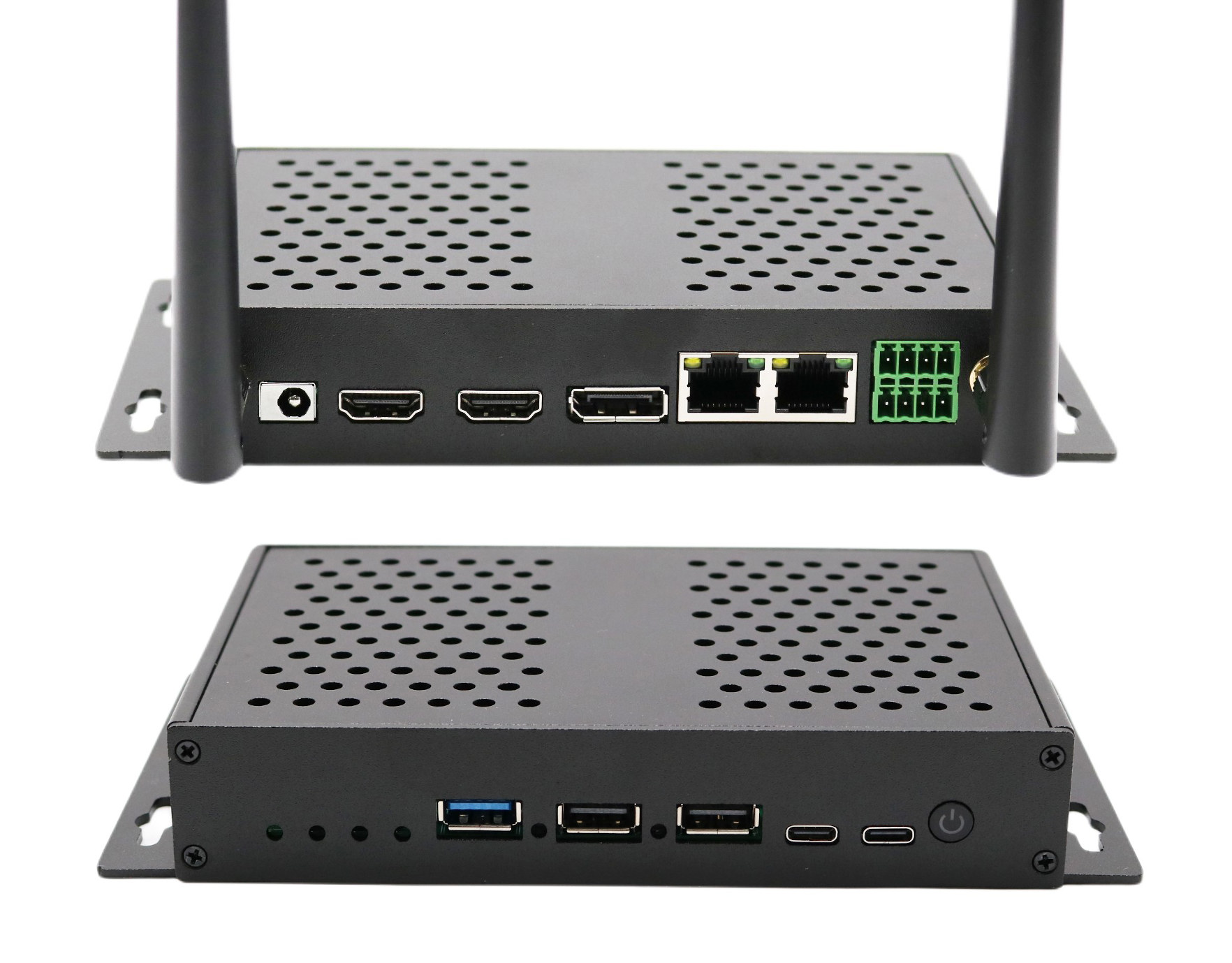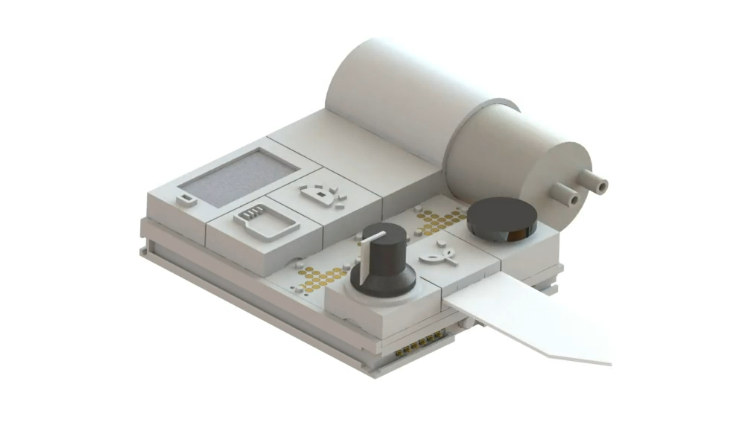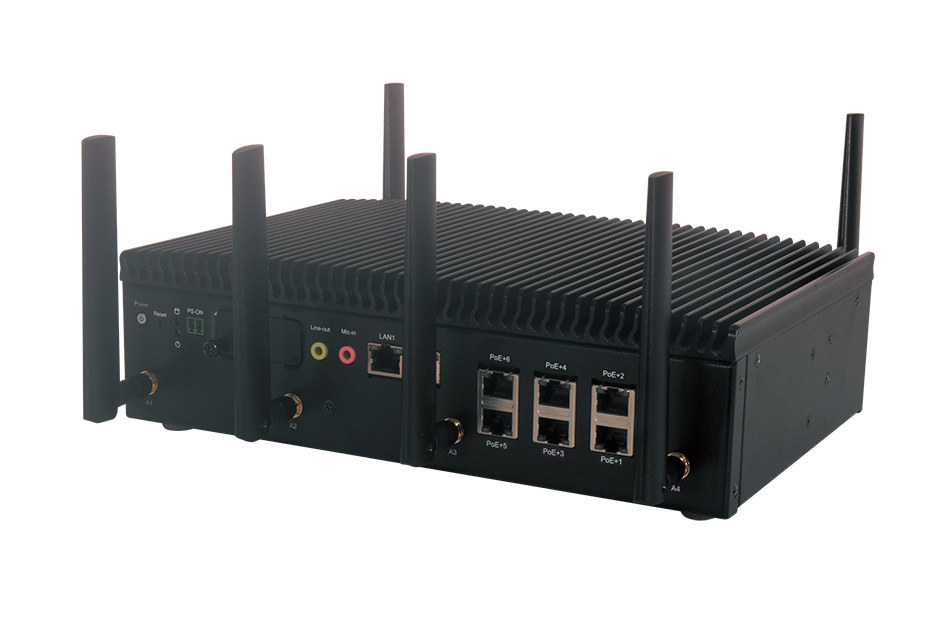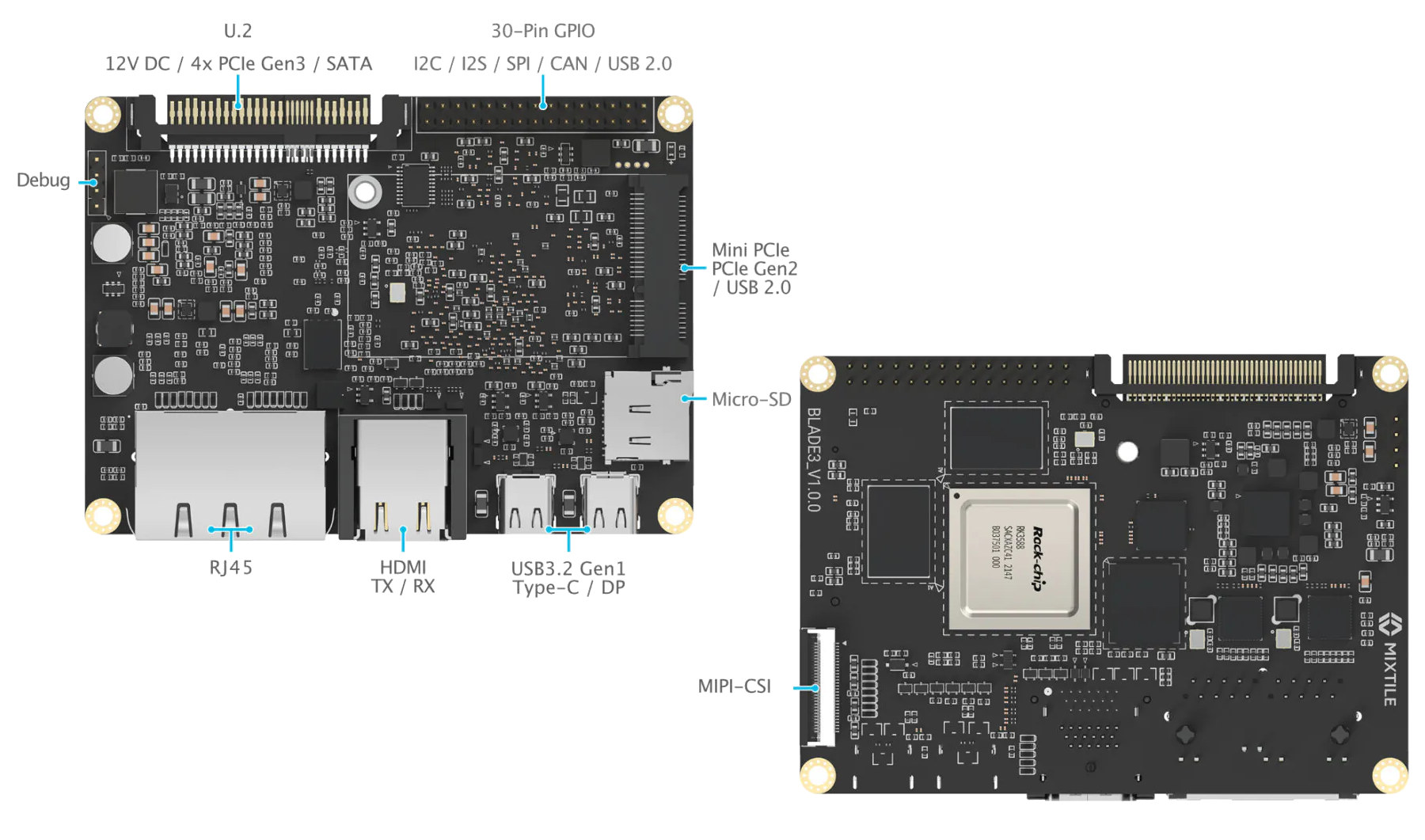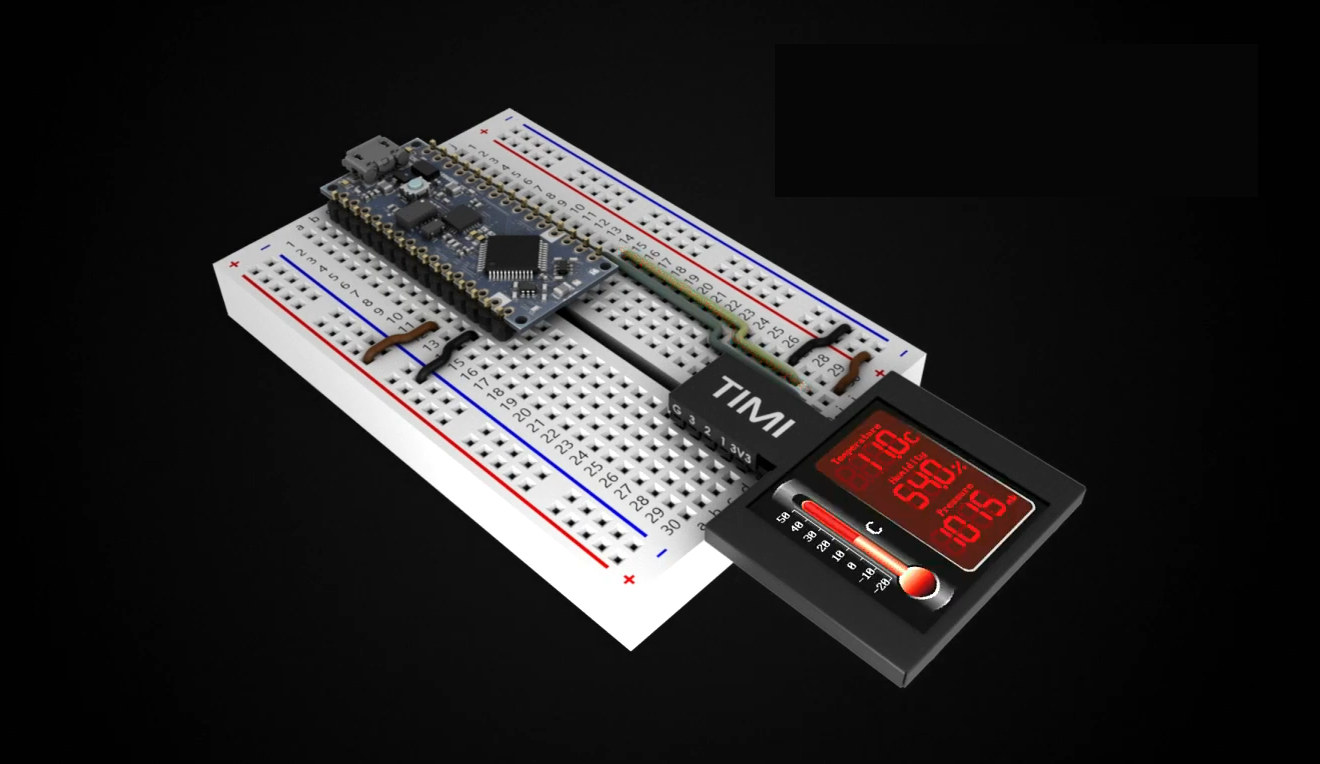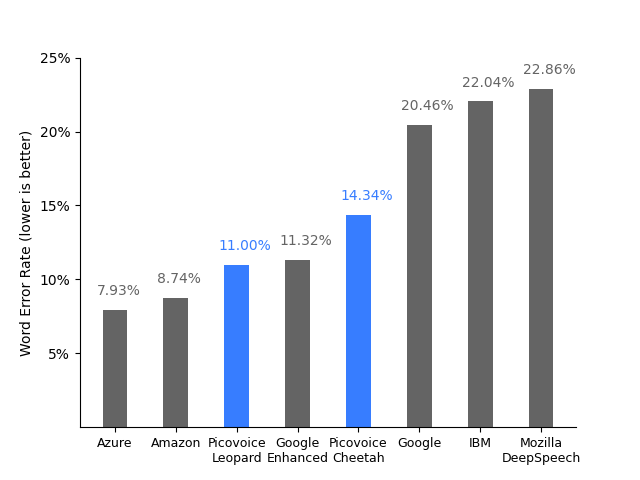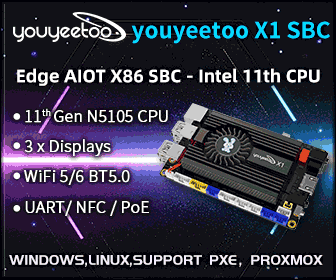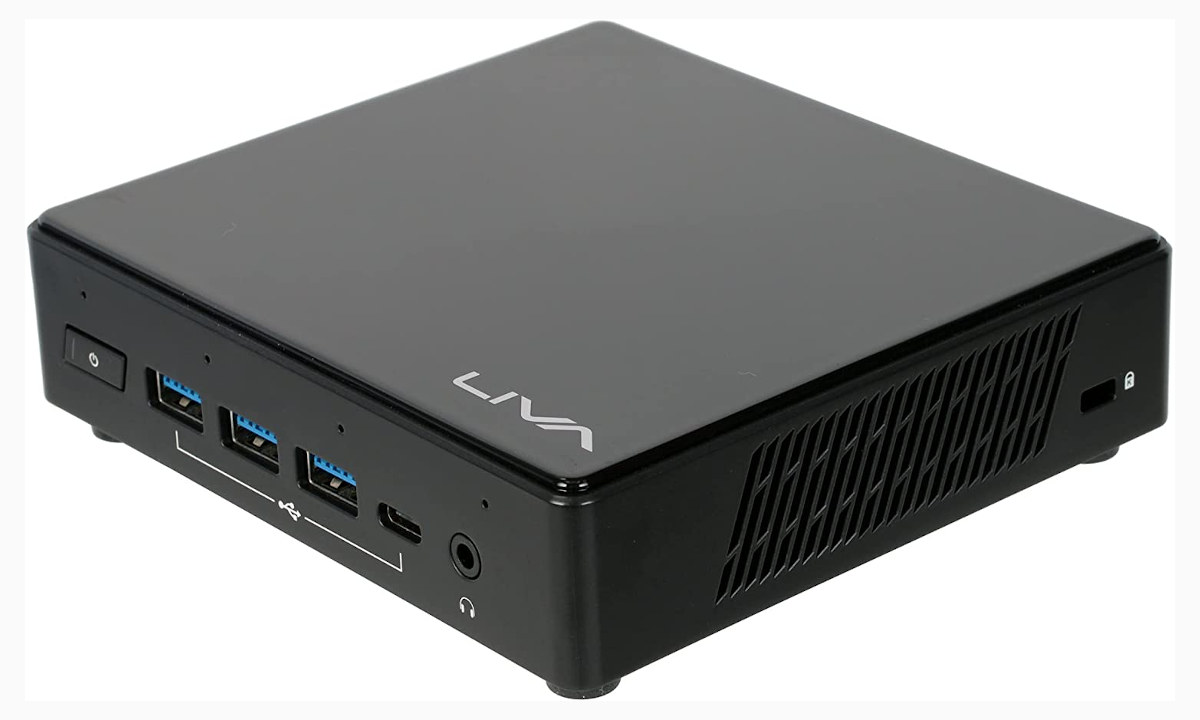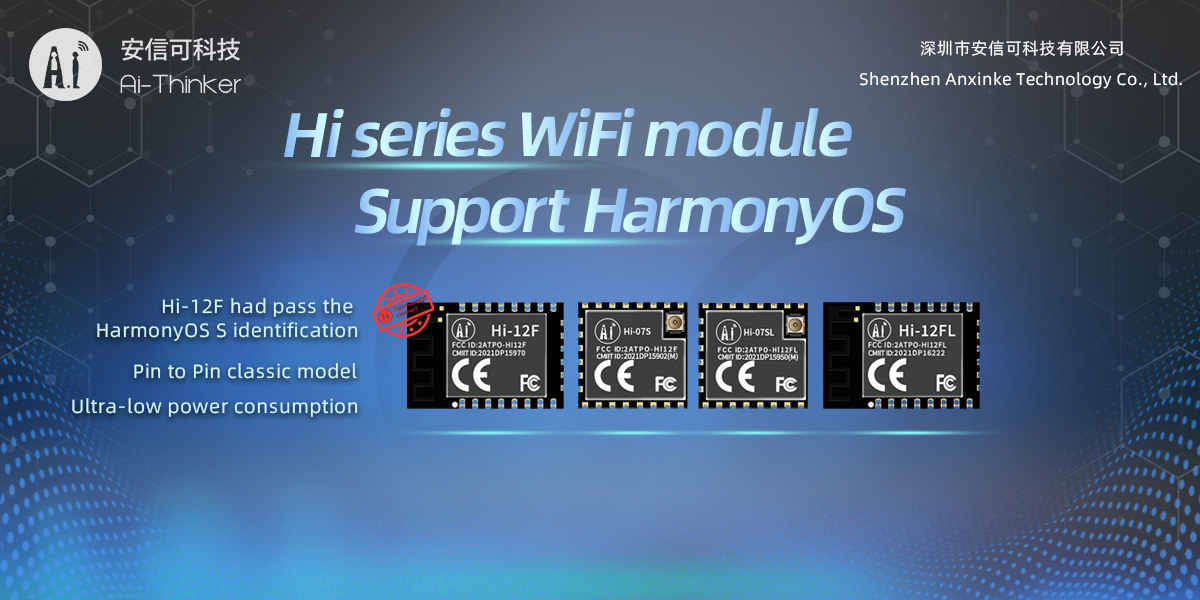Mekotronics R58X is an embedded mini PC powered by Rockchip RK3588 Cortex-A76/A55 processor with 16GB RAM, dual Gigabit Ethernet, 8K capable HDMI and DisplayPort video output ports, HDMI input, M.2 NVMe storage, and more. This is yet another announcement of Rockchip RK3588 hardware following ROCK5 Pico-ITX SBC, Firefly ITX-3588J mini-ITX motherboard, and Mixtile Blade 3 server board among others. Melotronix R58X may have different use cases, as it is suitable as an IoT gateway, an industrial PC, an edge computing platform, a video analytics server, digital signage, a vehicle control unit, and other embedded applications. Mekotronics R58X mini PC/SBC specifications: SoC – Rockchip RK3588 octa-core processor with four Cortex-A76 cores @ 2.4 GHz, four Cortex-A55 cores @ 1.8 GHz, an Arm Mali-G610 MP4 GPU, a 6TOPS NPU, 8K 10-bit decoder, 8K encoder System Memory – Up to 16GB LPDDR4x Storage eMMC 5.1 flash 2x SATA 3.0 connectors + SATA power […]
Pockit modular Linux computer gets a Raspberry Pi CM4 upgrade
We first wrote about the Pockit modular Linux computer with hot-plugging magnetic blocks about a year ago. The system was based on a STM32+ESP32 mainboard with a socket for an optional Raspberry Pi Compute Module 3 and included magnets and electrical contacts to snap and hot-plug modules/blocks while the computer is running. The developer (Anil Reddy) has made good progress with the project and added the option to use a Raspberry Pi CM4 with Pockit (provided you can find one) to improve performance, for example for computer vision. Other changes include support for AI accelerators, an improved dashboard, home automation integration, and more. Pockit now supports over 80 feature BLOCKS ranging from a rotary encoder to a microSD card reader to various camera types, an HDMI block, AI accelerators, and so on. All of which can be magnetically snapped while the computer is running, and automatically detected in the dashboard. […]
Lanner IIoT-I530 machine vision industrial PC comes with 6x PoE+ ports, dual 2.5GbE
Lanner IIoT-I530 is a fanless machine vision IPC (Industrial PC) powered by a choice of Intel Tiger Lake UP3 processors and equipped with six PoE+ or LAN ports for IP cameras, as well as two 2.5GbE ports. The embedded computer also comes with up to 64GB DDR4 RAM, two COM Ports, four USB 3.0 ports, dual HDMI output, digital inputs and outputs, as well as M.2 sockets for WiFi 6 or/and 5G connectivity, plus NVMe SSD storage. Lanner IIoT-I530 specifications: SoC – 11th Gen Intel Core Tiger Lake UP3 up to Core i7-1185GRE quad-core CPU @ 1.8 GHz / 4.4 GHz (Turbo) with Intel Iris Xe Graphics System Memory – Up to 64GB DDR4 3200 RAM via 2x 260-pin SO-DIMM sockets Storage 1x SATA with 2.5-inch drive bay for SSD/HHD 1x mSATA socket, 1x M.2 M-Key 2280 PCIe Gen4 x4 socket for NVMe SSD 256Mbit SPI Flash for AMI BIOS […]
Mixtile Blade 3 – A Rockchip RK3588 Pico-ITX board for server applications
The Rockchip RK3588 hype continues with the Mixtile Blade 3, a new Pico-ITX board powered by the Cortex A76/A55 processor, coupled with up to 32GB RAM, up to 256GB storage, and designed for server applications with two 2.5GbE interfaces. The single board computer also comes with HDMI 2.1 output, HDMI 2.0 input, USB 3.2 Gen 1 USB Type-C ports, a mini PCIe Gen 2 for expansion, and a PCIe Gen 3 x4 connector to connect two Mixtile Blade 3 boards together for high-performance computing. Mixtile Blade 3 specifications: SoC – Rockchip RK3588 octa-core processor with four Arm Cortex-A76 cores @ up to 2.4 GHz, four Arm Cortex-A55 cores, ArmMali-G610 MP4 quad-core GPU with support for OpenGL ES3.2, OpenCL 2.2, Vulkan1.1, 6 TOPS NPU, 48MP ISP, 8Kp60 video decoding, 8Kp30 video encoding System Memory – Up to 32GB LPDDR4 memory Storage – Up to 256GB eMMC flash, MicroSD 3.0 card socket, […]
TIMI-130 – A breadboard color display with hundreds of pre-designed user interfaces
Tiny I2C, UART, or SPI displays are usually not difficult to connect to a breadboard with a few jumper cables, but Breadboard Mates TIMI-130 display makes that neater with a design made specifically for the breadboard, plus hundreds of pre-designed user interfaces/pages to simulate buttons, LED matrices, gauges, and other widgets. TIMI stands for Tiny Intelligent Modular Instrument, and TIMI-130 comes with a 1.3-inch color TFT IPS LCD, plus two 5-pin headers to power and connect the display to the breadboard through UART or I2C and update the widgets and values with simple commands. TIMI-130 specifications: Display driver – 4D Labs Pixxi-28 graphics processor with 14KB SRAM, 32KB flash Storage – 32MB flash Memory. Display – 240×240 pixel resolution TFT IPS LCD (non-touch). 2x 5-pin 2.54mm pitch headers with 3.3V (5V tolerant) serial UART interface (300 to 2187500 Baud). Master I2C (3.3V level) interface bus. 3x GPIO (3.3V level): 2x […]
Picovoice on-device speech-to-text engines slash the requirements and cost of transcription
Picovoice Leopard and Cheetah offline, on-device speech-to-text engines are said to achieve cloud-level accuracy, rely on tiny Speech-to-Text models, and slash the cost of automatic transcription by up to 10 times. Leopard is an on-device speech-to-text engine, while Cheetah is an on-device streaming speech-to-text engine, and both are cross-platform with support for Linux x86_64, macOS (x86_64, arm64), Windows x86_64, Android, iOS, Raspberry Pi 3/4, and NVIDIA Jetson Nano. Looking at the cost is always tricky since companies have different pricing structures, and the table above basically shows the best scenario, where Picovoice is 6 to 20 times more cost-effective than solutions from Microsoft Azure or Google STT. Picovoice Leopard/Cheetah is free for the first 100 hours, and customers can pay a monthly $999 fee for up to 10,000 hours hence the $0.1 per hour cost with PicoVoice. If you were to use only 1000 hours out of your plan that […]
ECS Liva Z3 Celeron N4500 Jasper Lake mini PC becomes available for $195
ECS Liva Z3 mini PC is now available with an Intel Celeron N4500 dual-core Jasper Lake processor, 4GB RAM, 64GB eMMC flash, and HDMI and mini DisplayPort 4K video output for $194.88 on Amazon. Both the Liva Z3 and Z3E mini PCs were introduced in December 2021 with a choice of Intel Pentium Silver N6000, or Celeron N5100/N4500 from the 11th generation Jasper Lake family, with the Liva Z3E adding space for a 2.5-inch SATA drive and two RS-232 COM ports, but at this time, we could only find Liva Z3 with a Celeron N4500 for sale. ECS Liva Z3 specifications (for the model available on Amazon): SoC – Intel Celeron N4500 dual-core processor @ 1.1GHz / 2.8GHz (Burst frequency) with Intel UHD graphics; 6W TDP System Memory – 4GB DDR4 upgradable to up to 16GB via 2x SO-DIMM DDR4 socket Storage 64 GB eMMC 5.1 flash Support M.2 NVMe […]
Ai-Thinker Hi-series WiFi modules support HarmonyOS (Sponsored)
Ai-Thinker Hi-series WiFi modules feature Hisilicon Hi3861/Hi3861L 32-bit RISC-V microcontroller with 2.4GHz 802.11b/g/n WiFi 4 and support for HarmonyOS for IoT projects. The new Hi-12F module even got certification for HarmonyOS “S identification” meaning the Hi-12F module supports HarmonyOS Connect for the Smart Home which used to be called “Works With HUAWEI HiLink” or “Powered by HarmonyOS”. Some of the highlights for Ai-Thinker Hi-series WiFi module include: Integrated high-performance 32-bit RISC-V microprocessor (Hi3861V100/Hi3861LV100) with 352KB SRAM, 288KB ROM, and 2MB Flash IEEE 802.11 b/g/n WiFi 4 up to 72.2Mbps @ HT20 MCS7 with STA and AP modes (Up to 6 clients in AP mode). Baseband and RF circuits with power amplifier PA, low noise amplifier LNA, RF balun, antenna switch, power supply management Multiple Security Capabilities with a built-in eFUSE, support for secure storage, and hardware ID Rich peripheral interfaces with UART, SPI, I2C, GPIO, ADC, PWM, I2S, SDIO, etc… […]


